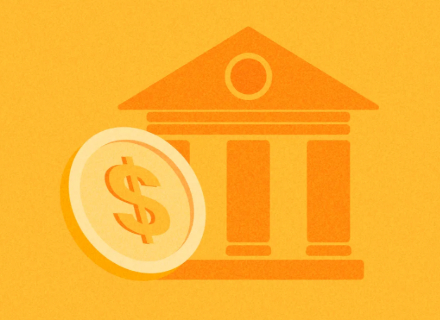What Wall Street Has Been Busy With Recently in RWA: Money Market Funds, Intraday Repo, Commercial Paper
JPMorgan points out that Wall Street giants are tokenizing real-world assets (RWA) at an unprecedented pace and integrating them into their core financial businesses.
JPMorgan points out that Wall Street giants are tokenizing real-world assets (RWA) and integrating them into core financial businesses at an unprecedented pace. This is mainly reflected in three cutting-edge areas: money market funds tailored for stablecoins, blockchain-based intraday repo transactions, and fully digitalized commercial paper issuance.
Written by: Bao Yilong
Source: Wallstreetcn
Today, the integration of traditional finance and digital assets is no longer a distant vision, but a structural transformation that is currently underway.
According to Chasing Wind Trading Desk, JPMorgan's latest research on August 27 shows that Wall Street giants are tokenizing real-world assets (RWA) and integrating them into core financial businesses at an unprecedented speed.
This is mainly reflected in three cutting-edge areas: money market funds tailored for stablecoins, blockchain-based intraday repo transactions, and fully digitalized commercial paper issuance.
JPMorgan believes these innovations are expected to enhance trading efficiency, reduce costs, and provide better liquidity management. However, the development of regulatory frameworks will still take time, and the CLARITY Act is expected to be formally passed only by early 2026.
Stablecoin Reserve Funds: The Digital Transformation of Traditional Money Market Funds
Traditional financial institutions are actively embracing the stablecoin market, viewing it as a key bridge connecting the digital and real worlds.
The report points out that Bank of New York Mellon is preparing to launch a money market fund focused on stablecoin reserves, becoming the third asset management giant to enter this field after BlackRock and Goldman Sachs.
Last week, Goldman Sachs submitted an application for a stablecoin reserve fund, while BlackRock launched the Circle Reserve Fund as early as the end of 2022. The fund's shares are intended to be held by stablecoin issuers as reserve support for their circulating payment stablecoins.
According to documents submitted to the U.S. Securities and Exchange Commission, this money market fund, named "BNY Dreyfus Stablecoin Reserves Fund," is mainly targeted at stablecoin issuers to serve as reserve assets for their stablecoins.
The fund is classified as a government money market fund, with investments strictly limited to U.S. Treasury securities, Treasury repos, and cash.
In the SEC filing, Bank of New York Mellon stated, "Because the fund intends to invest only in certain eligible reserve assets as specified by the Stablecoin Act, the fund's yield may be lower than other money market funds that are permitted to invest in a broader range of investments and longer maturities."
Blockchain-Enabled Intraday Repo: 24/7 Trading Becomes Reality
Liquidity management is at the core of financial markets. The report highlights two breakthrough advances in using blockchain technology to revolutionize the repo market, aiming to meet liquidity needs outside of regular market trading hours.
The first case is a standard repo transaction completed via the Tradeweb platform on the Canton Network, a public blockchain, with the entire process taking place on a Saturday.
This transaction tokenized U.S. Treasury securities held by a DTCC subsidiary and used them as collateral to borrow the stablecoin USDC from Circle.
The entire transaction was completed instantly on-chain, without the need for dealers as intermediaries, achieving instant settlement that is unattainable in traditional markets. Multiple institutions, including Bank of America and Citadel, participated, highlighting the great potential of this technology for cross-institutional collaboration.
The second case comes from the collaboration between JPMorgan, HQLAx, and Ownera.
They have launched a cross-ledger repo solution that allows traders to exchange between JPMorgan's cash ledger and HQLAx's collateral ledger, with settlement and maturity times precise to the minute.
This provides institutions with a new, efficient tool to optimize intraday liquidity, far surpassing the settlement efficiency of traditional repo transactions.
The Blockchain Revolution of Commercial Paper: Full Lifecycle Digitization
The application of blockchain has penetrated the core processes of traditional debt instruments.
The report reveals that OCBC Bank issued $100 millions in U.S. commercial paper through JPMorgan's digital debt service, becoming the first bank to issue commercial paper using blockchain throughout its entire lifecycle (issuance, settlement, servicing, and record-keeping).
State Street Bank purchased all the notes and became the first third-party custodian institution to go live on the digital debt service.
By leveraging blockchain, these processes can become more efficient and transparent, also bringing additional benefits such as faster settlement times.
JPMorgan points out that the intersection of digital assets and traditional finance is just the beginning, but large-scale adoption will still take time as regulation in this field develops.
The U.S. CLARITY Act is a new piece of legislation currently underway, aiming to establish a comprehensive regulatory framework for all digital assets in the market and address the blurred market structure and jurisdictional issues between the U.S. Securities and Exchange Commission and the Chicago Mercantile Exchange.
The bill has passed the House of Representatives but has not yet passed the Senate and is expected to take longer. JPMorgan expects the bill to reach the U.S. President's office by early 2026.
Disclaimer: The content of this article solely reflects the author's opinion and does not represent the platform in any capacity. This article is not intended to serve as a reference for making investment decisions.
You may also like
This Week's Preview: Macro "Flood Release" Week—Delayed CPI and the Bank of Japan's "Rate Hike Pursuit"
Key global market data will be released this week, including the U.S. non-farm payroll report, CPI inflation data, and the Bank of Japan's interest rate decision, all of which will significantly impact market liquidity. Bitcoin prices are fluctuating due to macroeconomic factors, while institutions such as Coinbase and HashKey are striving to break through via innovation and public listings. Summary generated by Mars AI This summary was generated by the Mars AI model. Its accuracy and completeness are still being iteratively improved.

Weekly Hot Picks: The Fed Cuts Rates and Indirectly "Injects Liquidity"! Silver Replaces Gold as the New Favorite?
The Federal Reserve is cutting interest rates and starting bond purchases, while Japan and other regions may turn to rate hikes. Silver repeatedly hits record highs, SpaceX is set for a 1.5 trillion IPO, and Oracle becomes the litmus test for the AI bubble. The Russia-Ukraine peace process is stuck on territorial issues, the US seizes a Venezuelan oil tanker... What exciting market events did you miss this week?

Key Highlights to Watch at Solana Breakpoint 2025
How does Solana seize market share in an increasingly competitive landscape?

Crucial Alert: ZRO Leads This Week’s $100M+ Token Unlocks – What Investors Must Know
